Shalom is the basic greeting in Israel that would get you through the door. I’m happy you decided to check out this Christian Catholic Four Day Tour I’ve compiled. Even without using a private tour guide, I think this itinerary would give a good scope of the Holy Land.
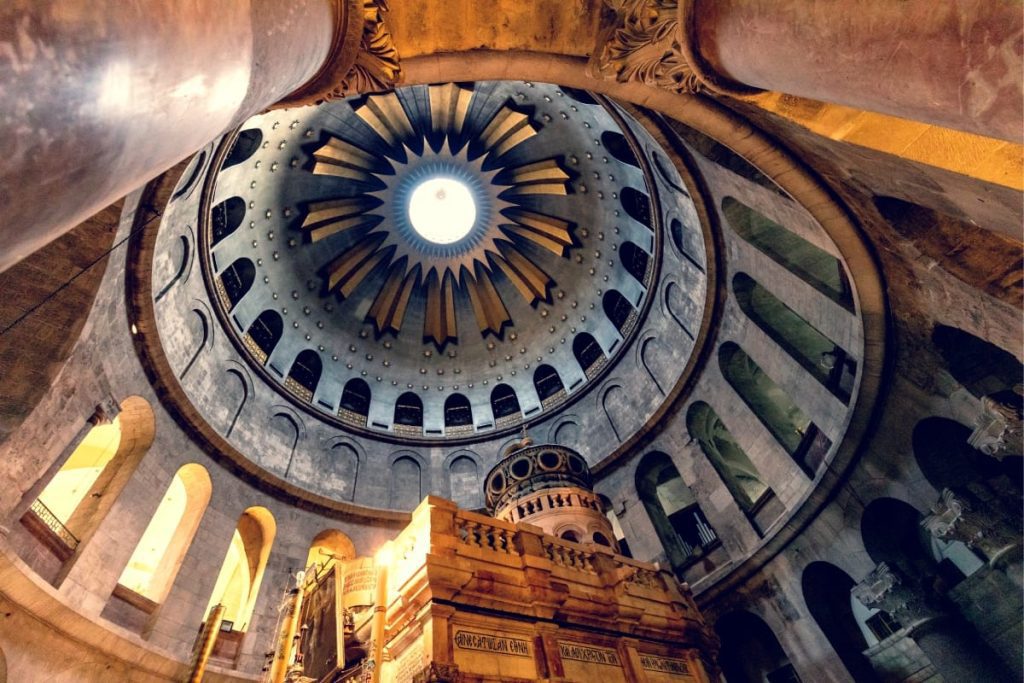
Christian Catholic Four Day Tour:DayOne – Jerusalem
Welcome to the Holy Land! The Land of Milk & Honey! Our private tour of Israel will start by checking out the Old City from Mt. of Olives Viewpoint. From there we’ll have a proper introduction to the city. So I will be pointing out important structures that are forming the city’s skyline and their relation to important traditions. After that, we’ll use the Road of Palm Sunday to get to the famous site of Gethsemane and the Church of the Agony. Also on our way, we’ll visit Dominus Flevit where according to tradition Jesus Wept for the Destruction of the City.
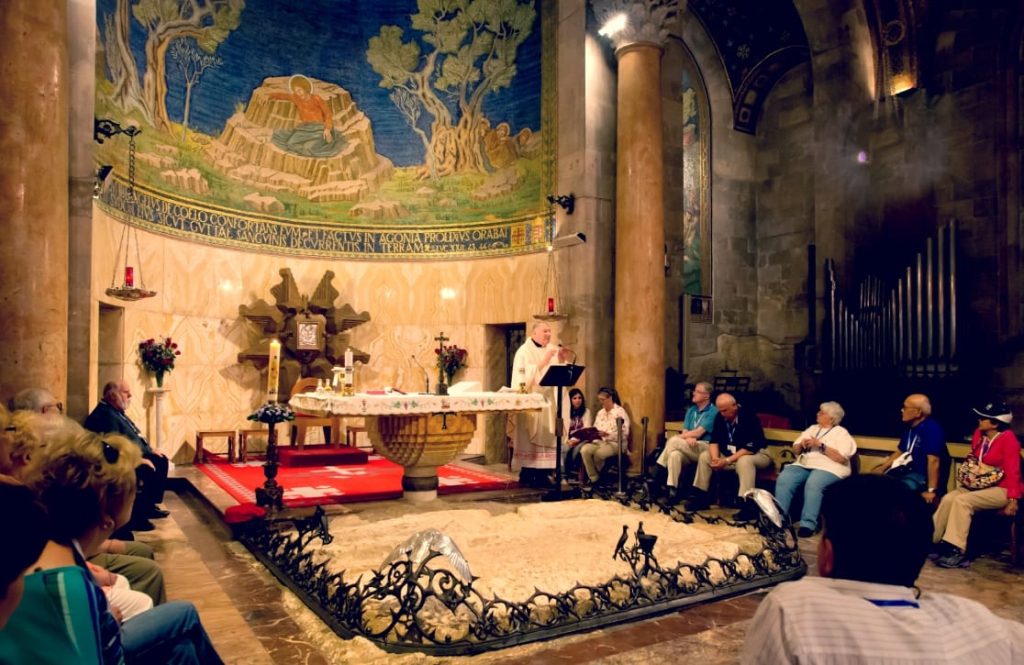
Touring The Old City
We’ll enter Old Town Jerusalem through Jaffa Gate, starting with the Western Wall located at the Jewish Quarter. In fact, there we can actually see the remains of the Original Herodian Western Wall, laying in ruins exactly as the Romans left it, after the Destruction of the Second Temple.
Pinnacle Of The Temple
Christian tradition says it is here where According to Matthew Satan Tempts Jesus for the Second Time Daring Him to Jump From the Pinnacle of the Temple and rely on angels to break his fall (Matthew 4). After paying our respects to the famous wall, we will continue to explore a little of the Jewish Quarter visiting the Herodian Mansions. This is where the Jewish upper social class resided in the time of Jesus. So by visiting there it will give us a good idea about homes belonging to prominent figures like the High Priest Annas. By using the Cardo we’ll move on to visiting the rest of the City’s Quarters.

Christian Catholic Four Day Tour: The Christian Quarter
After finishing up things in the Jewish Quarter it’s time to check out some of the Key Sites in the Christian Quarter. From the Jewish Quarter, We’ll use the Cardo of the Old City to get to the Church of the Holy Sepulchre. In fact, Most Christian traditions including most archaeologists, point to this location as where Jesus was Crucified, Buried, and Resurrected. Now while we’ll be touring inside, we’ll follow the last stations of the Via Dolorosa; tombs dated from the time of Jesus, and thoroughly explore the church. Also during our tour, we will encounter ancient relics like a genuine piece from the Cross of Jesus; The spot where Empress Helena found the Real Cross of Jesus; Mt. Golgotha; And much more! In the Event, There Aren’t Long Lines We Will See the Tomb of Jesus.
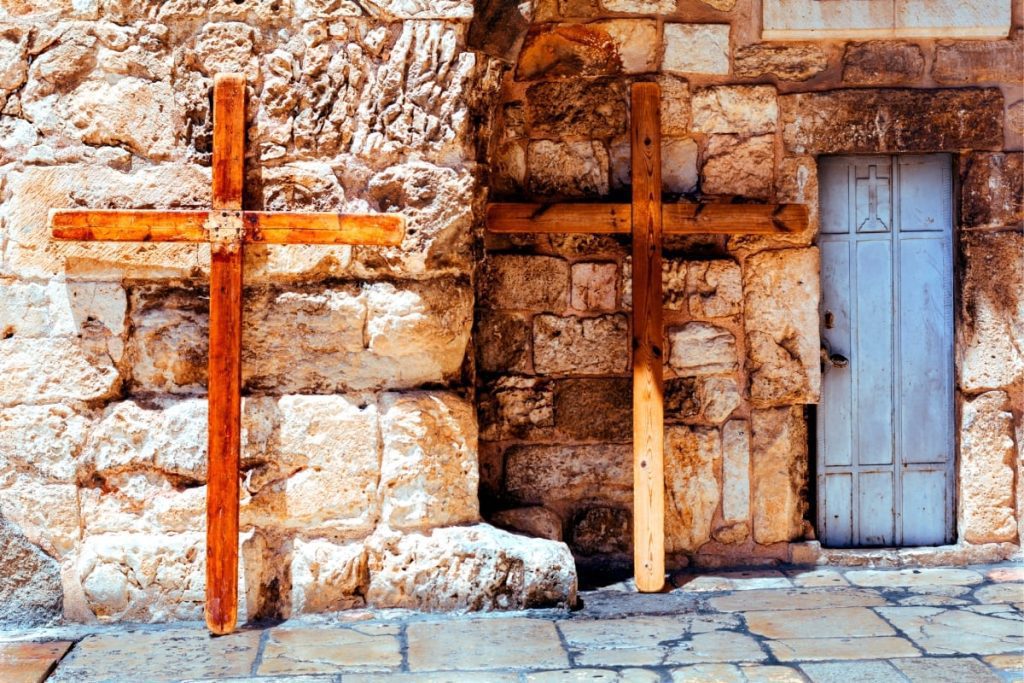
The Pools of Bethesda
Although already in the Muslim Quarter it’s a must-see site for every Christian. There are only Two Miracles in Jerusalem Jesus performed in the Holy City. We are lucky enough to visit one of them here at the Pool of Bethesda. According to the Gospel of John, it is here where Jesus Heals the Paralytic at the Bethesda Pool. Next to the Pools of Bethesda are Firsts Stations of the Cross, if time permits we will visit them as well.
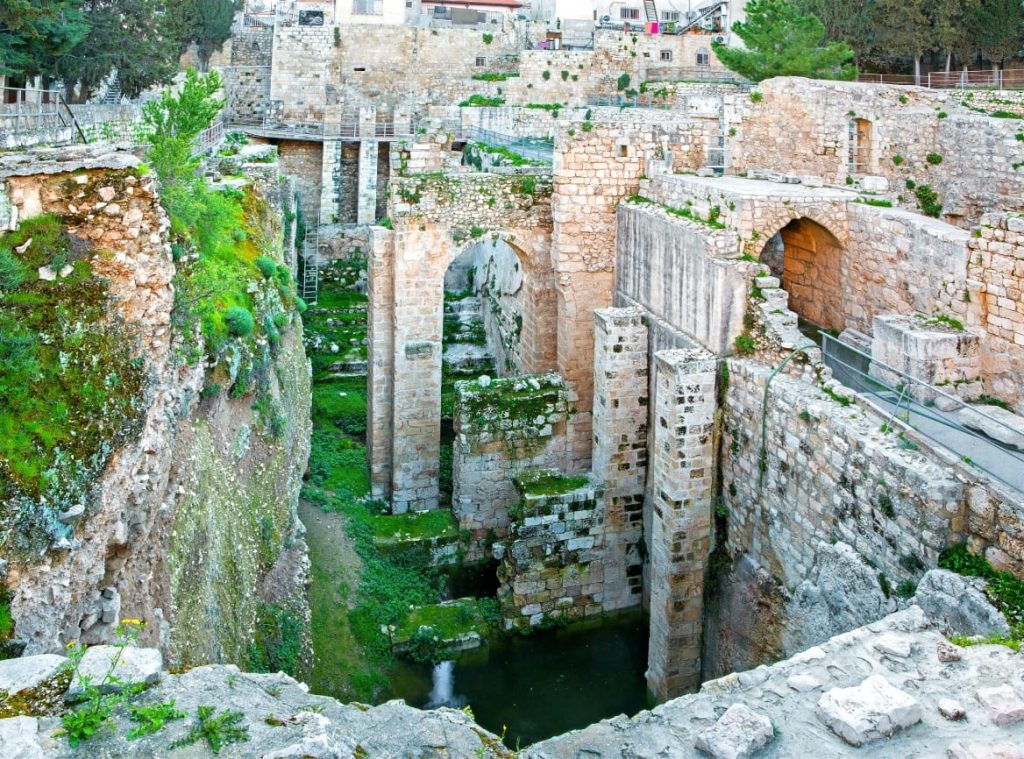
Where is the Best Place to Eat Lunch in Jerusalem?
No Worries, I’m Taking You There! For our lunch, the plan is to take you to the local Food Market Machne Yehuda. It’s an experience just walking there and absorbed all the aromas and smells but we would head to the Iraqi Shuk where a cool local restaurant is waiting for us with typical middle eastern dishes like the Best Hummus Ever in Israel; their flag dish ‘Azura’, Kima; Dolma; Moussaka and more yummy stuff that will make you lick your fingers. After walking the market for a bit, feasting our eyes on the fresh fruits, vegetables, and many different kinds of spices.
Ein Kerem: Where John the Baptist Was Born
According to Luke chapter one John, the Baptist is born in a Judean town near Jerusalem. So this Judean town is identified today as Ein Kerem located on the west side of the City. Now the second half of our private tour in Jerusalem will be dedicated to exploring what is today an upscale neighborhood. When touring the area we’ll check out two important sites that are worth visiting: First would be The Church of Visitation where according to Luke Mary met with Elizabeth, her cousin. The second will be the Church of St. John the Baptist; Where according to Christian traditions John the Baptist was born, in what is today the Crypt of the Church.

Christian Catholic Four Day Tour: Day Two – The Judea Desert
On the second day of our private tour of Israel will head to the Judea Desert. First, we’ll pass the Inn of the Good Samaritan, viewing Jericho. Then on our way down to the Dead Sea Area, we’ll talk about the famous Parable of the Good Samaritan and its importance to Christian Ethos. After that, we’ll head down to the River Jordan to Qasr el Yahud where John the Baptist, baptized Jesus. It’s worth mentioning that Baptism is one of the most ancient Christian sacraments that all Christian denominations accept. So we’ll discuss its importance to Christianity and its connection to Judaism.
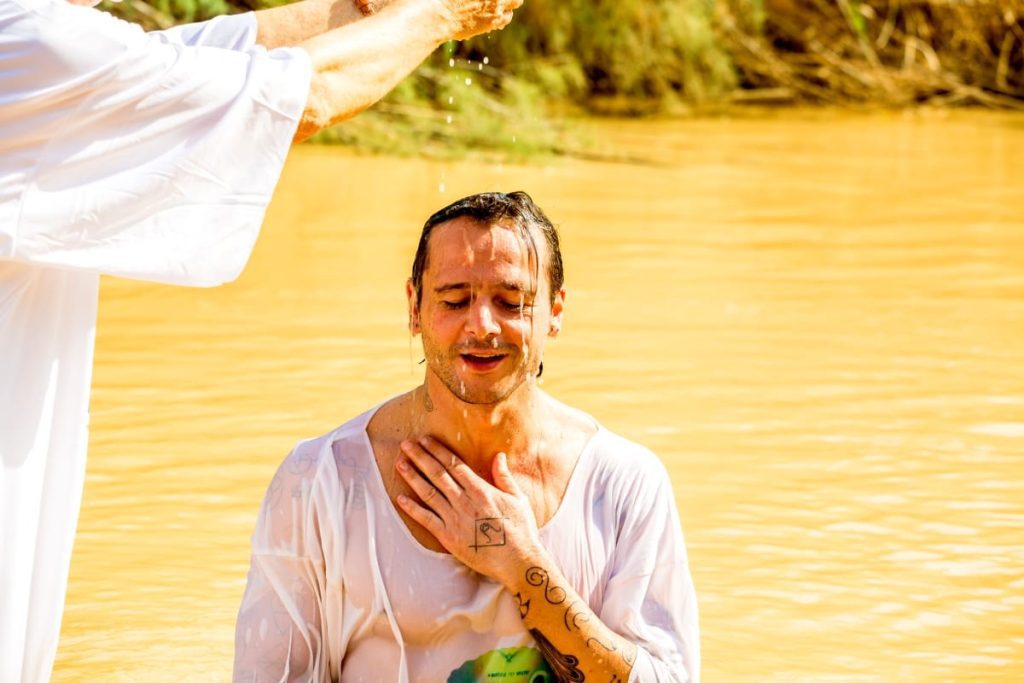
Another tradition regarding Qasr el Yahud that it is considered as the location where the Israelites after roaming the desert for forty years (a Typological Number in the Bible), entered the Promised Land; headed by Joshua, After Moses died on top of Mount Nevo (Modern Jordan) not allowed to enter the Land of Israel. So as you can see, not by chance the British Empire when they divided up the Middle East in the 20th century; they took under account the Biblical Borders; And since the River Jordan is an ideal natural border, that is why it was used in the past as such and also today.
The Wilderness Where Jesus Was Tested By Satan
The Catechism of the Catholic Church states: The Gospels speak of a time of solitude for Jesus in the desert immediately after his baptism by John. Driven By Satan Into the Judea Desert, Jesus remains there for forty days without eating; he lives among wild beasts, and angels minister him (Matthew 4).
Stones Into Bread
Satan is tempting Jesus telling him to make bread out of stones to relieve his own hunger. The temptation occurs in the same desert setting where Jesus had been fasting. Alexander Jones in his book The Gospel According to St. Matthew reports that the wilderness mentioned here since the fifth century been believed to be a rocky and uninhabited area between Jerusalem and Jericho, with a spot on Mt. of Temptation traditionally being the exact location where Jesus was Tempted for the Third Time by Satan: the Devil takes Jesus to a high place, “where all the kingdoms of the world can be seen” (Matthew 4). From the summit, Satan offers Jesus dominion over all earthly kingdoms in return for worshiping Satan.
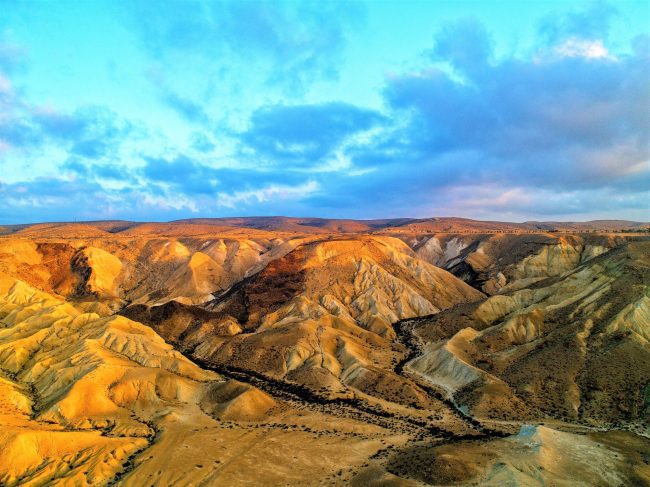
The desert has been seen as outside the bounds of society and as the home of demons such as Azazel (Leviticus 16:10). Robert H. Goundry, a known biblical scholar, states that the desert is likely an allusion to the wilderness through which the Israelites wandered during the Exodus, and more specifically to Moses. In response to Satan’s suggestion, Jesus replies, “It is written: ‘One does not live by bread alone, but by every word that proceeds from the mouth of God.” (a reference to Deuteronomy 8:3).
Christian Catholic Four Day Tour: Day Three – Old City of Jaffa
Shalom! Our Christian-themed private tour of Israel will pick up again here in Old Town Jaffa. First, it’s important to mention Jaffa is an ancient city mentioned multiple times in the Bible. For example: In the Book of Jonah it’s told that from its Ancient Port, Jonah the Prophet went off on his mission God had sent him, on his journey he was eaten by a whale. And we know King Solomon in order to embellish the First Jewish Temple brought to Jerusalem the Cedars of Lebanon via Jaffa Port.
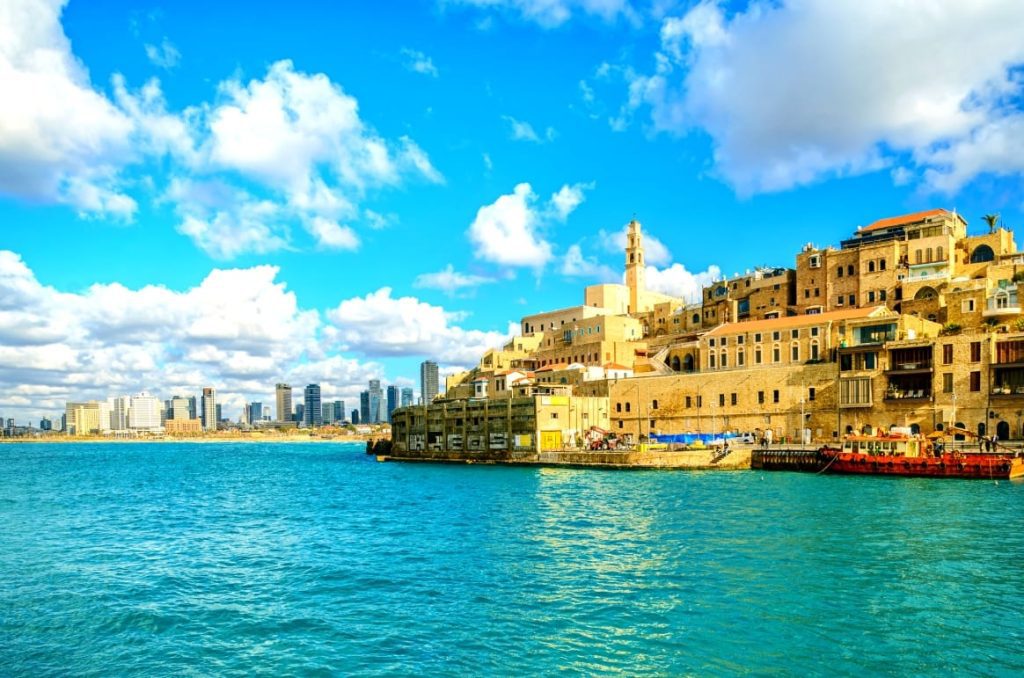
Most importantly, In Acts of the Apostles, it’s told that Simon Peter stayed during his missionary activities here in Jaffa as a guest in the house of Simon the Tanner. And while he was staying there he raised Tabitha, one of Jesus’ disciples, from the dead. After checking out the view from the top of the old tel we’ll go to the main square where there is a nice Church honoring Peter.

Also, we hear that at the same time Peter is experiencing a vision. A vessel that resembles a cloth descended from heaven showing all kinds of unclean animals; in other words, not Kosher. Afterward, he heard a voice telling him he can eat unclean animals (Acts 10). So we learn that it is here in Jaffa where Peter had this revolutionary idea to open the new faith to non-Jews, a pivoting moment in Christianity.
Caesarea National Park
Now our story continues to unfold here in Caesarea Maritima. In the same episode (Acts chapter 10) we hear about a Roman Centurion named Cornelius. Although he’s not the first in the New Testament, many Christians consider Cornelius as the first Gentile to convert to the new faith. So the story goes, while Peter is in Jaffa, Cornelius was in Caesarea, the capital of the Roman Iudaea province.
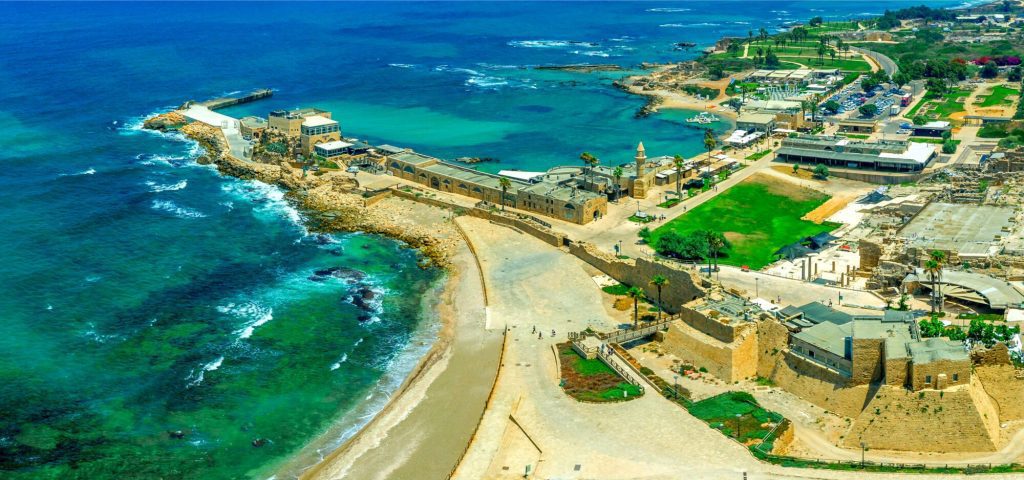
While Peter is experiencing this vision in the house of Simon the Tanner, Cornelius, a “God-fearing man”, is having his own vision in which an angel of God tells him that his prayer has been heard; So he understands that he’s chosen for a higher alternative. So the angels then instruct Cornelius to send men of his household to Jaffa, where they will find Simon Peter, who is residing with a tanner name of Simon (Acts chapter 10:5).
When Cornelius” men arrive, Simon Peter understands that through this vision the Lord commanded the Apostle to preach the Word of God to the Gentiles. Peter accompanies Cornelius’ men to Caesarea. When Cornelius meets Simon Peter, he falls at Peter’s feet. Simon Peter raises the centurion and the two men share their visions. First Simon Peter tells of Jesus’ ministry and the Resurrection; the Holy Spirit descends on everyone at the gathering. Thereupon Simon Peter commands that Cornelius and his followers be baptized.
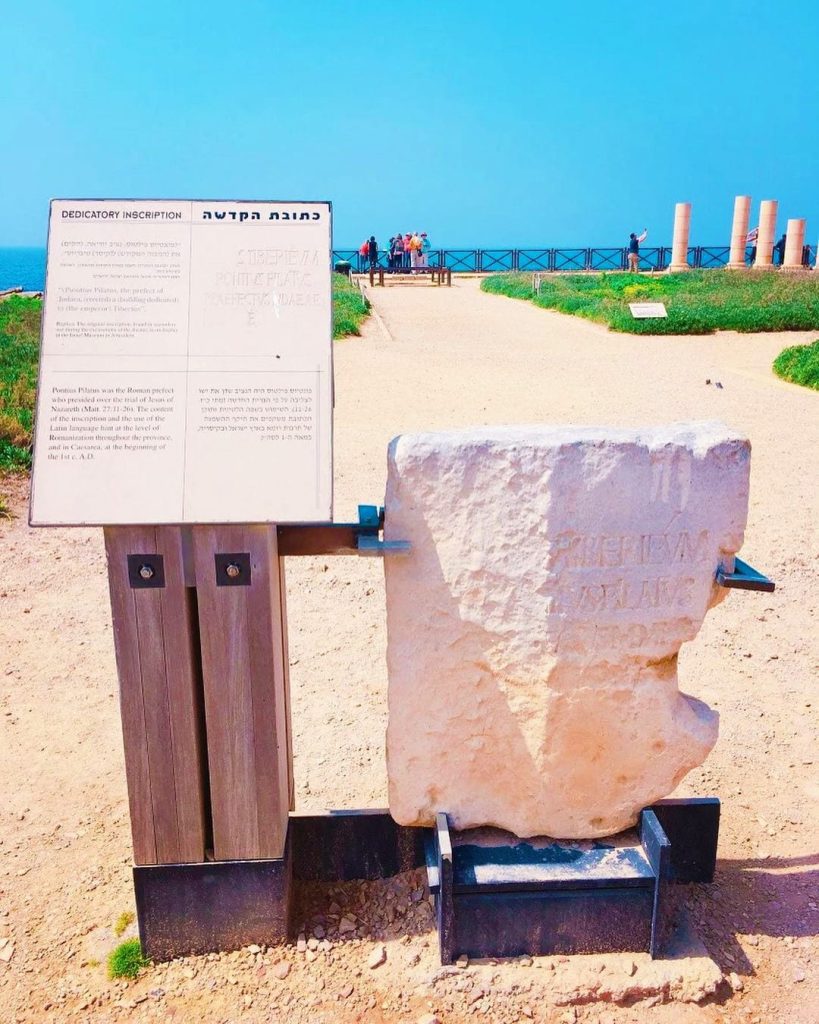
The Episode of The EthiopianEunuch
As a private tour guide In Israel, I mention to my clients that in Acts chapter eight we hear about an earlier conversion of the Ethiopian Eunuch to Christianity. We hear that it was Philip the Evangelist, that later was living in Caesarea Maritima with his four daughters who foretold, where he was visited by Paul the Apostle. The biblical account says that an angel told Philip to go to the road from Jerusalem to Gaza, and there he encountered the Ethiopian Eunuch.
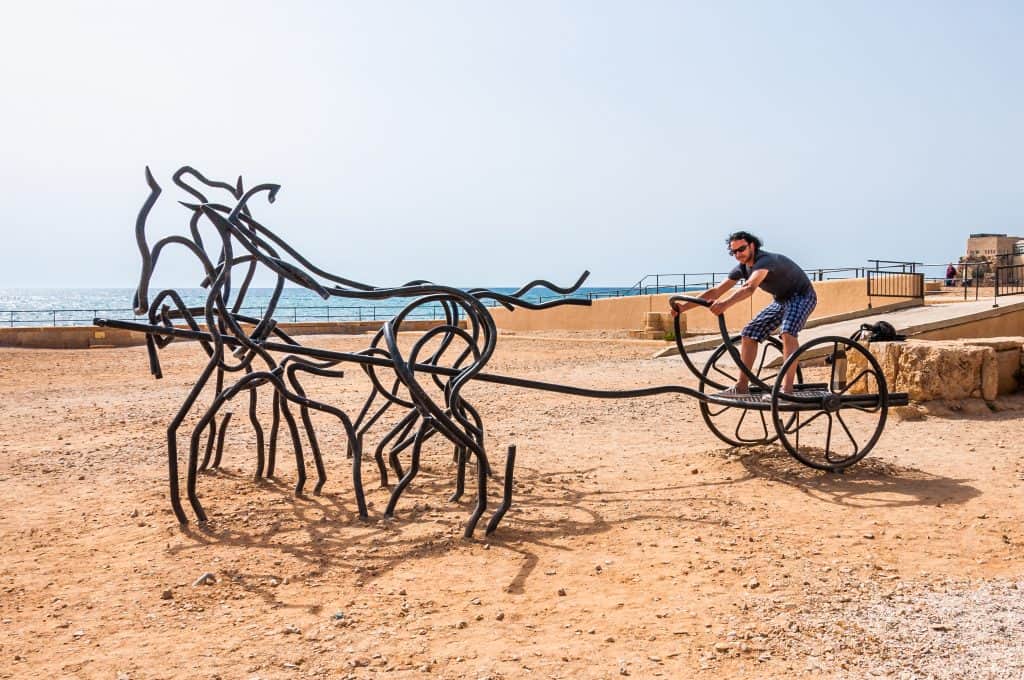
So While he was sitting in his chariot reading the Book of Isaiah, he was reading Isaiah chapter 53:7-8. Then Philip asked the Ethiopian, “Do you understand what you are reading?”. Consequently, he said he did not and asked Philip to explain the text to him. Philip told him the Gospel of Jesus, and the Ethiopian asked to be baptized. Then they went down into some water and Philip baptized him.
Paul Imprisonment In Caesarea
After being arrested in Jerusalem, Paul is sent to Caesarea where he is Imprisoned for Two Years. During this time he is brought before the Roman Governor Felix who is later replaced by Porcius Festus. He appeals to Caesar and is sent to Rome. Meanwhile, Paul is under arrest, Acts mentions he was kept in the praetorium (Acts 25). Even Though it’s not entirely clear where that location, we do know that the term was used to describe any structures with palatial rooms. So this raises the probability that he was kept in one of the rooms belonging forming the Royal Palace in Caesarea where the Governor resided, previously built by Herod the Great.
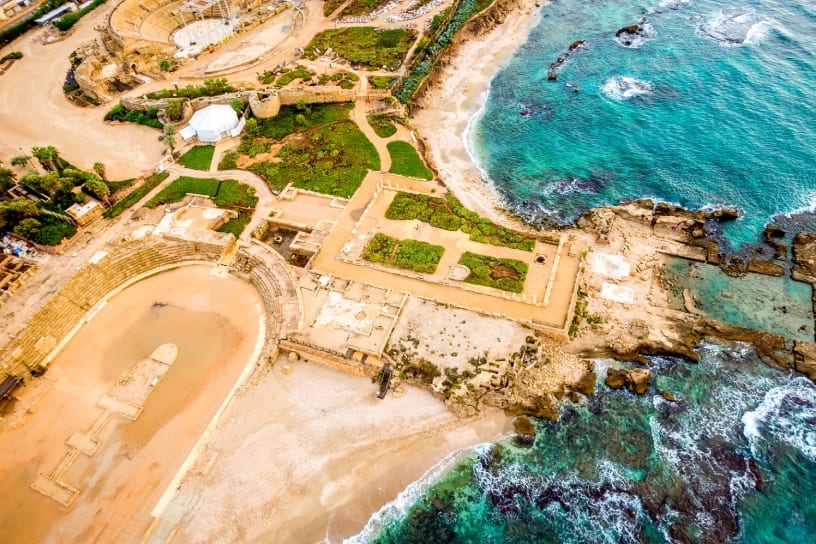
Christian Catholic Four Day Tour: Old Town of Acre
The Old Town of Acre, officially a World Heritage Site by UNESCO, has been the scene of numerous historical events. Due to its strategic location on the Mediterranean coast; this town has been inhabited by many peoples over the centuries. Paul returning from his Third Journey; after having called at Tyre and having stayed in the city for a week and meeting the disciples again. Paul, with Luke, embarked for Ptolemais (the name given to Acre by the Greeks). Here they went to greet the brothers and stayed the whole day with them. The next day they left for Caesarea Maritima where they arrived before nightfall.
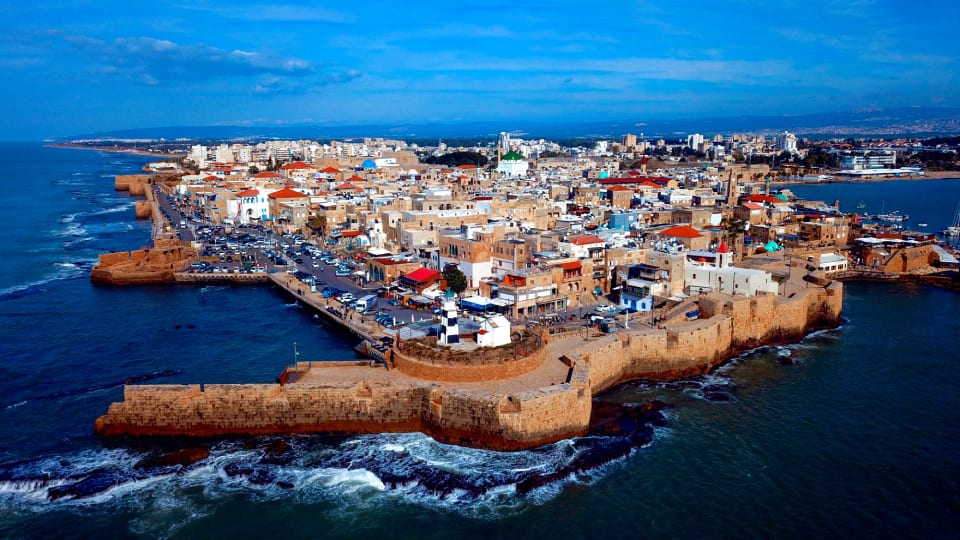
Yet another glorious episode of Acre is during the Crusaders Era when the land was controlled by the Kingdom of Jerusalem. In 1187, Saladin conquered much of the country’s territory including Acre and Jerusalem, after winning the Battle of Hattin. The Third Crusade was launched in response; the Crusaders besieged and eventually recaptured Acre in 1191. Acre became the capital of the Kingdom of Jerusalem.
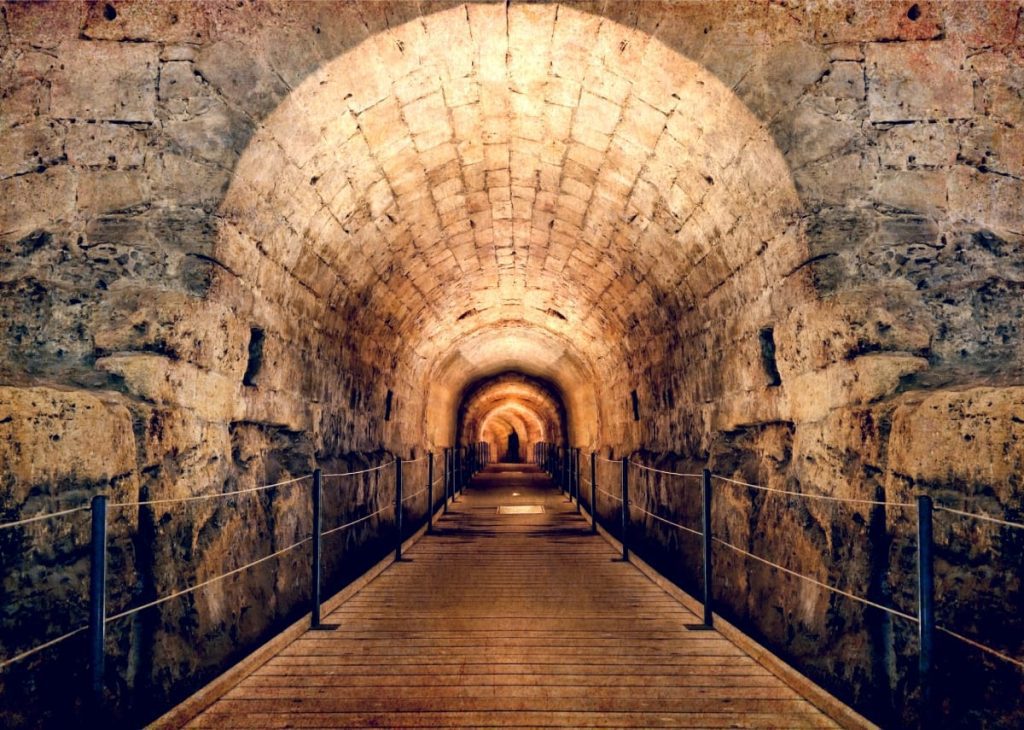
The religious orders made their headquarters around the city and from there made crucial military and diplomatic decisions. In 1250 the Mamluk Sultanate arose in Egypt; It was a more dangerous enemy than the Ayyubids. The Mamluk fielded heavy cavalry – a match for the Crusader’s knights – and was much more hostile. In 1291 the Mamluk army besieged Acre and resulted in losing the Crusader-controlled city of Acre to the Mamluks. It’s considered to be one of the most important battles of the period. When Acre fell the Crusaders lost their last major stronghold of the Crusader Kingdom of Jerusalem.
The Center of the Knights Orders
On our tour of the Old City will visit the Crusader City and what was the Center of the Knights Hospitaller: We’ll explore the Ancient Walls of the City; The Refractory, where the knights use to come together and eat; The Public Latrines; The Knights Halls; The Crypt of St. John de Arc Church and more. We would end our visit using an underground tunnel that was built by the Knights Templar to get access to the port from their quarter that was on the other side of Acre.
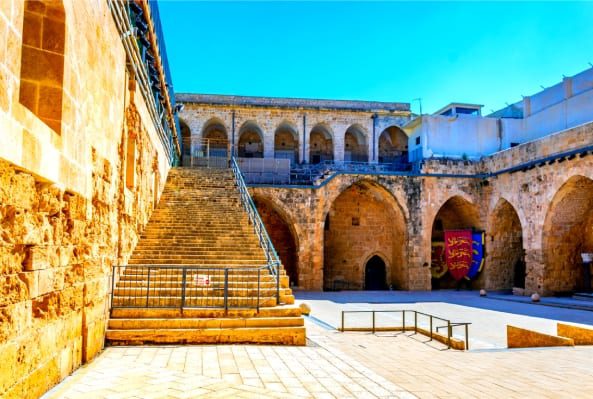
Christian Catholic Four Day Tour: Day Four
Nazareth and the Village of Cana
We’ll begin our day in Nazareth, the childhood town of Jesus, with the Basilica of the Annunciation; the Church of St. Joseph. After learning about Nazareth we shall continue to Cana where according to the Gospel of John Jesus performed his first miracle; turning water into wine at a wedding feast (John 2:1-11). Although none of the synoptic gospels record the event; mainstream Christian tradition holds that is the First Public Miracle of Jesus.
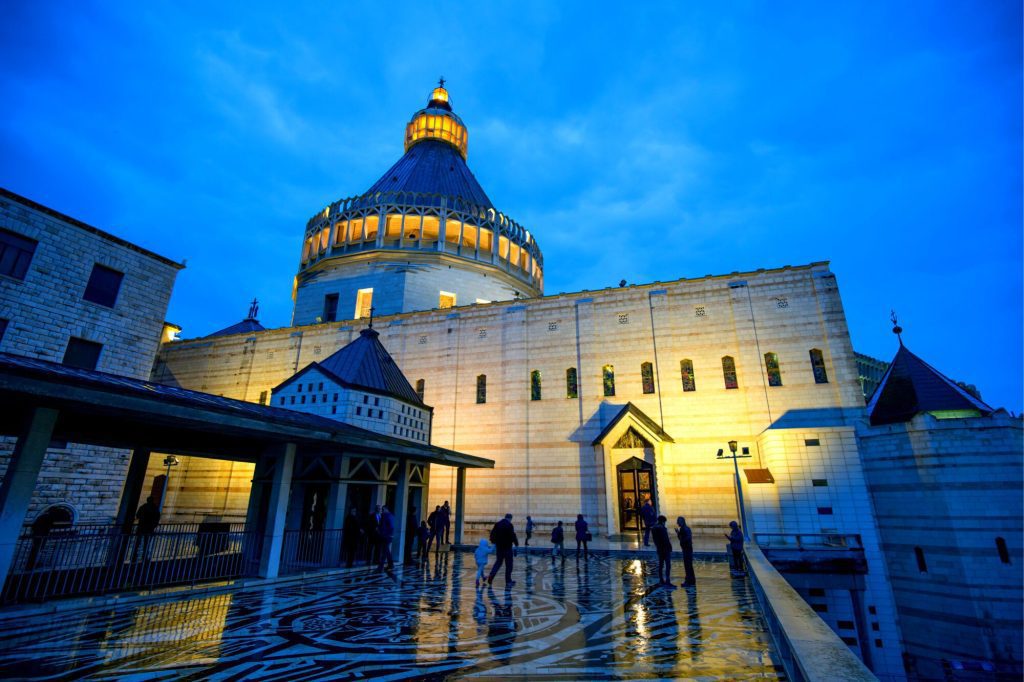
The other biblical references to Cana are also in John which mentions that Jesus is visiting Cana when he is asked to heal the son of a royal official at Capernaum, and John 21:2 where it is mentioned that Nathanael (sometimes identified with the Bartholomew included in the synoptic gospels) comes from Cana.
Christian Catholic Four Day Tour: Around the Sea of Galilee
The ideal spot to launch our tour at the Sea of Galilee would be Arbel National Park. Probably the Best View Over To The Sea of Galilee is over there. a short easy walk of ten minutes and you’ll have 360 degrees view of the entire. On a good clear day, you would see Mt. Hermon bordering with Syria; Mount Tabor in the Lower Galilee, and Mt. Meron, the highest summit in the Upper Galilee.
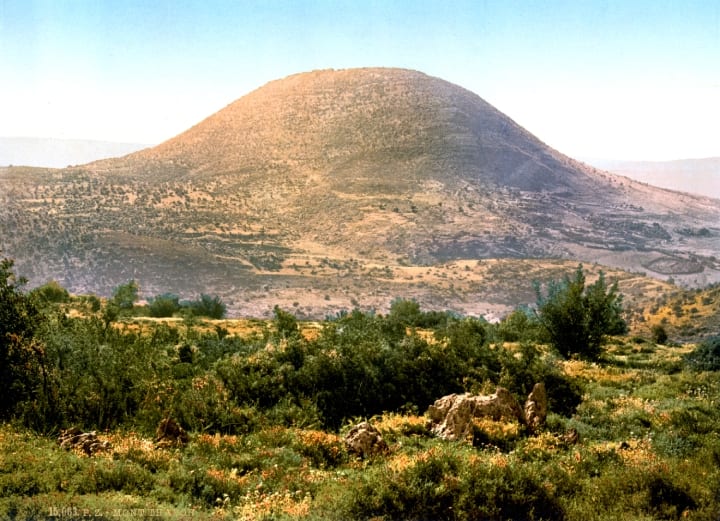
Below, around the Sea Of Galilee, all the towns and villages that Jesus visited are waiting for us to explore: Bethsaida, Capernaum, Chorazin. Those three were named in the Gospels of Matthew and Luke as “cities” in which Jesus performed “mighty works”. However, because those towns rejected his work, they were subsequently cursed (Matthew 11:20-24).
Capernaum: Jesus’ Own Town
The town is cited in all four gospels. Where it was reported to have been the home of Tax Collector Matthew, and located not far from Bethsaida, the hometown of the apostles Simon Peter & Andrew, James & John. Some readers take Mark 2:1 as evidence that Jesus may have owned a home in the town, but it is more likely that he stayed in the house of one of his followers here.
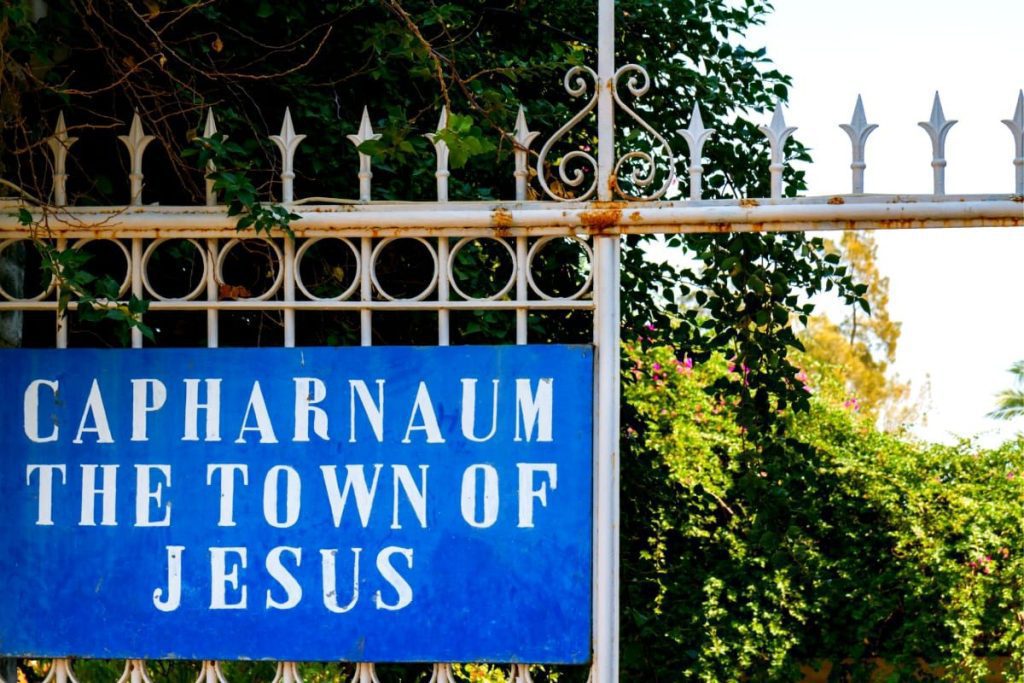
He certainly spent time teaching and healing there. One Sabbath Jesus taught in the Synagogue in Capernaum and healed a man who possessed by an unclean spirit. Afterward, Jesus Healed Peter’s mother-in-law of a fever (Luke 4:38-39). According to Luke and Matthew, this is also the place where Jesus Healed the Servant of a Roman Centurion who had asked for his help. Capernaum is also the location of the Healing of the Paralytic lowered by friends through the roof to reach Jesus, as reported in Mark 2:1-12 and Luke 5:17-26.
Is Capernaum Really “Jesus Own Town”?
In Matthew the town is referred to only as “his own city”, and the narrative in (Matthew 9:2-7) does not mention the paralytic being lowered through the roof. Most traditional biblical commentators assume that in Matthew 9:1-7 “his own town” means Capernaum.
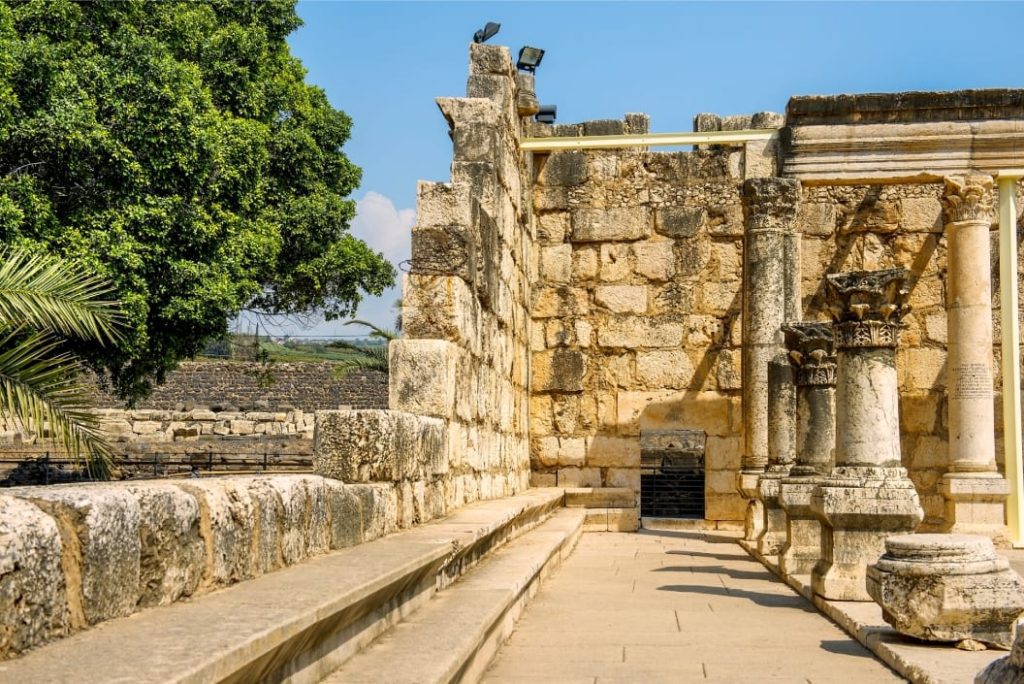
According to the Synoptic Gospels, Jesus selected this town as the center of his public ministry in Galilee after he left the small mountainous hamlet of Nazareth (Matthew 4:12-17). He also formally cursed Capernaum along with Bethsaida and Chorazin, saying “You will be thrown down to Hades!” (Matthew 11:23) because of their lack of faith in him as the Messiah.
Tabgha- The Miracle of the Multiplication of the Loaves and Fishes
Traditionally accepted as the place of the Multiplication of the Loaves and Fishes. Also, it’s considered to be the location for the third Resurrection Appearances of Jesus (John 21:1-24) after his crucifixion. On-site, there is an impressive Mosaic Floor From the 5th century Byzantine Church. The Sasanians destroyed the church in 614 C.E.
Primacy of Peter
Near Tabgh there is the traditional site where Simon Peter is receiving the Primacy of the rest of the disciples. According to the Catholic belief, Simon Peter was distinguished by Jesus to hold the First Place of Honor and Authority. Also in Catholic belief, Peter was, as the first Bishop of Rome, the first Pope. Furthermore, they consider every pope to be Peter’s successor and the rightful superior of all other bishops. The Catholic Church’s recognition of Peter as head of its Church on Earth is based on the interpretation of two passages from the canonical gospels of the New Testament: John 21:15-17 & Matthew 16:18; as well as sacred tradition.
The Location of the Miraculous Catch of Fish
This location is also considered to be where The Miraculous Catch of Fish took place. According to John 21:11 “Simon Peter climbed back into the boat and dragged the net ashore. It was full of 153 large fish, but even with so many the net was not torn.”
In the Gospel of John, seven of the disciples – Peter, Thomas, Nathaniel, the sons of Zebedee (James and John) and two others decided to go fishing one evening after the Resurrection of Jesus but caught nothing that night. Early the next morning, Jesus (whom they had not recognized) called out to them from the shore:
“Friends, haven’t you any fish?”
When they reply in a negative Jesus responds: “Throw your net on the right side of the boat and you will find some.” After doing so, “They were unable to haul the net in because of the large number of fish.” Realizing the identity of their advisor, the Disciple Whom Jesus Loved said to Peter, “It is the Lord!” at which Peter jumped into the water to meet him (an aspect of the story often illustrated in Christian art), while the remaining disciples followed in the boat, towing the net, which proved to be full with 153 large fish.
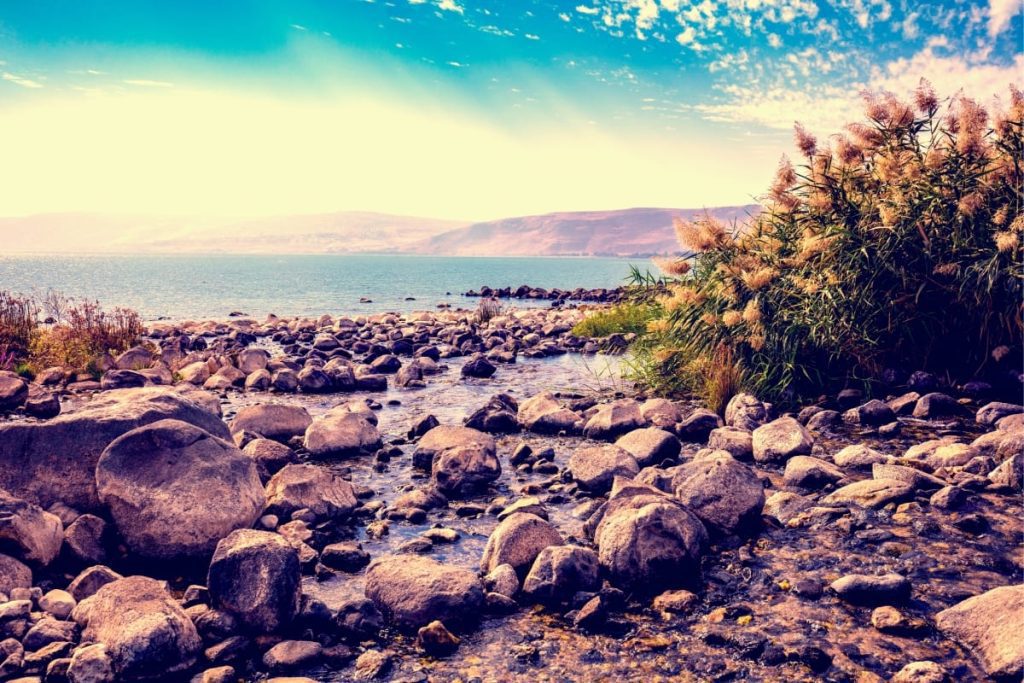
Christian Catholic Four Day Tour: Mount of Beatitudes
A Byzantine church was erected lower down the slope from the current site in the 4th century. The current Roman Catholic Franciscan Chapel was built in 1937-38, following plans by Italian architect Antonio Barluzzi. It is in this area, according to tradition, Jesus gave the Sermon On The Mount. It includes some of the best-known teachings, such as the Beatitudes. In order to properly understand Jesus’ teachings, we’ll put in context; extracting the meaning of the sermon and how it’s playing a central role in the Modern Christian Ethos.
Sea of Galilee Boat
The ending note of our spiritual journey around the Sea of Galilee would be visiting The Ancient Galilee Boat. Dated from the 1st-century C.E, discovered in 1986. Other than the dating, there is no evidence connecting the boat to Jesus or his disciples.
With that said, the boat’s construction conforms to other boats built in that part of the Mediterranean during the period between 100 BCE and 200 BCE Constructed primarily of Cedar planks joined together by pegged Mortise and Tenon joints and nails, the boat is shallow drafted with a flat bottom, allowing it to get very close to the shore while fishing.
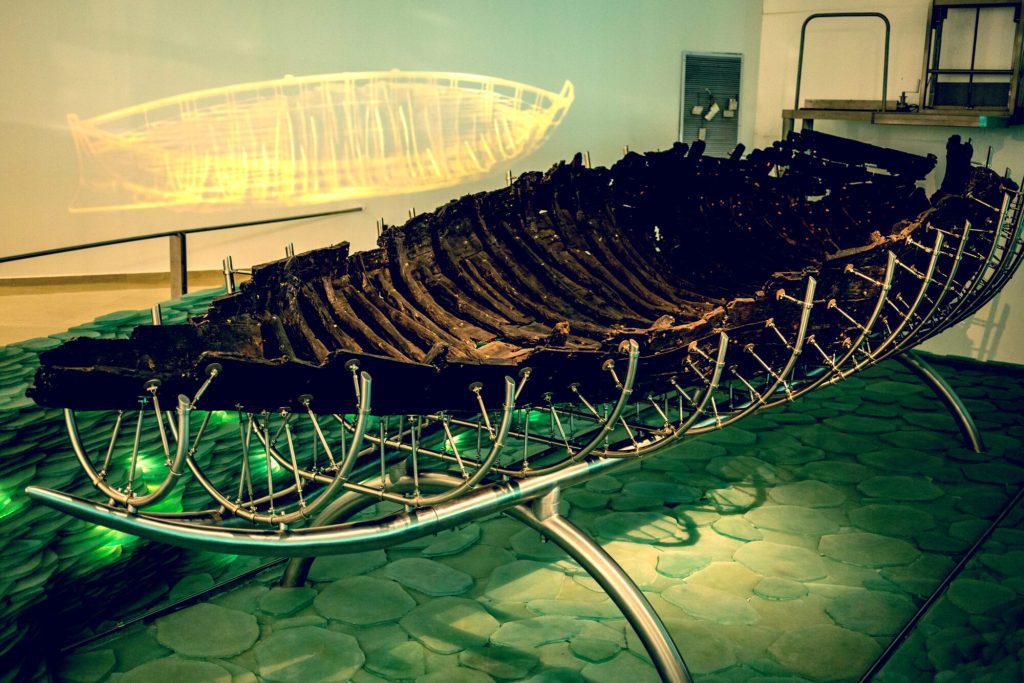
However, the boat is composed of different wood types, suggesting either a wood shortage or that the boat was made of scrap wood and had undergone extensive and repeated fixes. The boat was row-able, with four staggered rowers, and also had a mast allowing the fishermen to sail the boat.
It’s optional from the boat’s location to go on a sail on the Sea of Galilee and sign off our four-day tour reflecting while traveling where Jesus Walked On Water.

